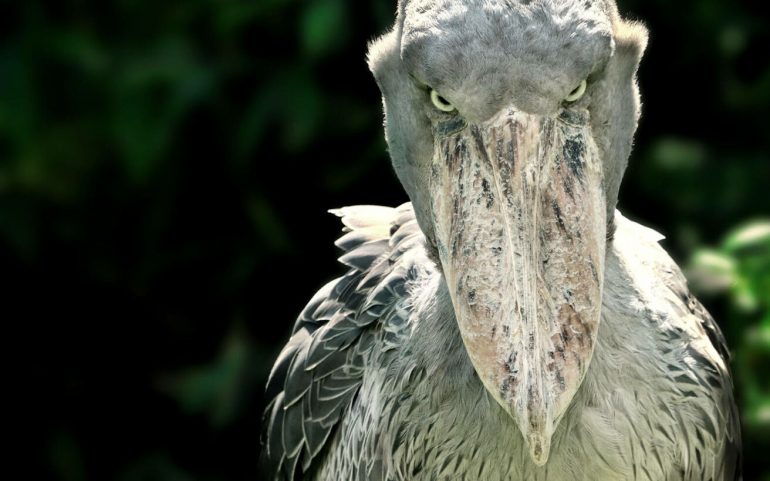From New Guinea to Africa we will go to see birds that are hard at work negotiating their place in the food chain.
And if the birds are intertwined with beautiful images of freedom and carefree, like the ones we see in a series on Instagram, there are creatures out of them from a nightmare.
Like this pelican that can make a pill a little crocodile!
We will talk about birds that have evolved in ways that guarantee their survival and most of them will be afraid to meet them in the wild.
And in fact you would do very well…
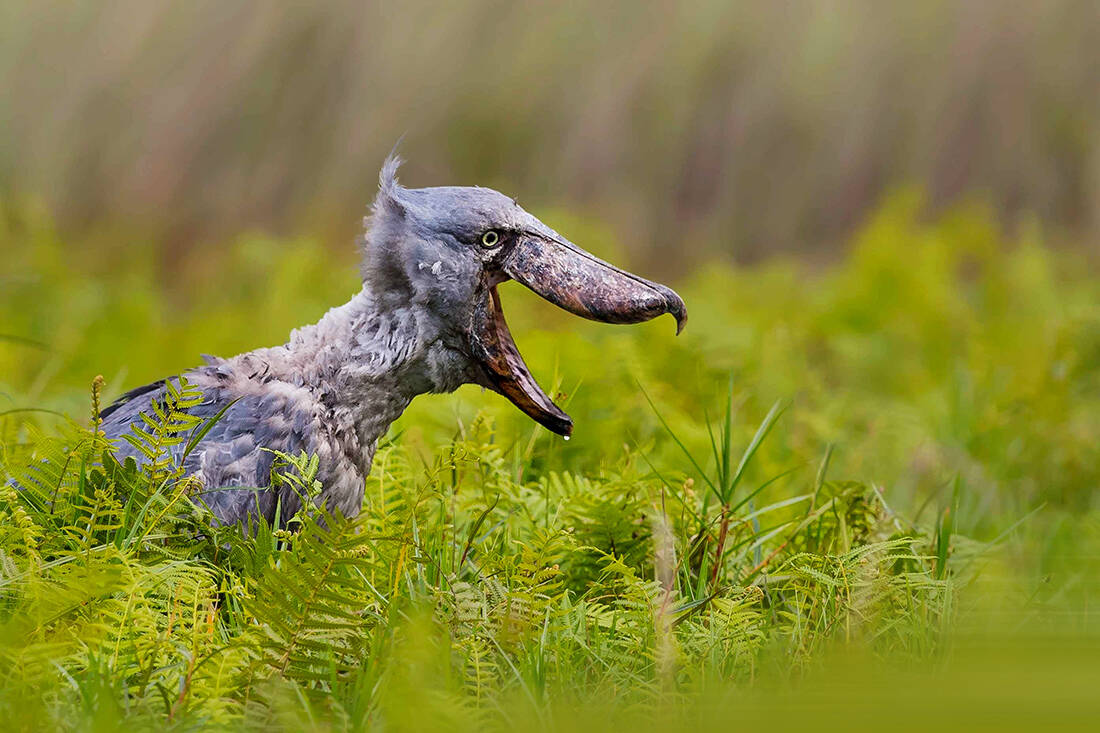
The whale (Balaeniceps rex) is without a doubt one of the scariest birds on the planet. With an imposing height of 1,5 meters and wingspan of 2,5 meters, it necessarily catches the eye.
Although it is its deadly beak, from which it also takes its name, since it looks like a whale's snout, what makes the difference. It is 18 cm of brute force, easily tearing a 2 meter fish.
With an insatiable appetite and a look that leaves no room for doubt in its intentions, the pelican-shaped shoebill (stork-shaped until recently) will be found in the swamps of Africa since prehistoric times.
Unclassified until recently, until it found its own class (Balaenicipitidae), the whale emerged as the evolution of a species of dinosaur, specifically beasts, which had the honor of hosting the family Tyrannosaurus Rex.
This flying terror, the "pelican of death" as the tribes of the Black Continent call it, is what its beak is.
The third longest beak of the bird kingdom that is, which is extremely spacious to cover its greedy appetites. It is also extremely noisy, so it attracts mates and drives away anyone who mistakenly considers its whale its prey.
He hunts with the same beak frogs and reptiles, but also larger animals, such as 2-meter fish and crocodiles. And he chases all this with his other inimitable property, to sit still for hours.
The pointed end of its beak tears the booty flesh or even decapitates it. The whale is better as a parent, as male and female alternate positions when spawning eggs.
Both its high price on the black market ($ 10.000) and a number of other factors now threaten it with extinction. Its population ranges, according to the International Union for Conservation of Nature, from 3.300-5.300 members.
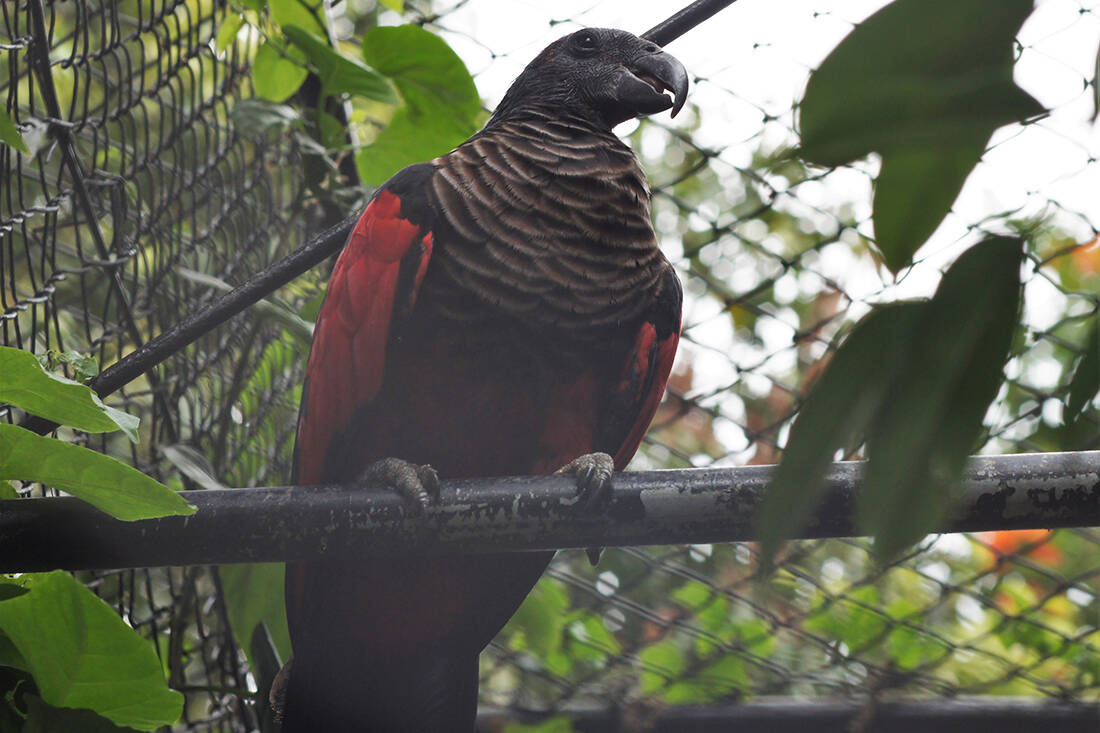
With a threatening appearance and official marking as "rare", the dragon parrot (Psittrichas fulgidus) has deservedly earned its name. We meet him exclusively in her jungles New Guinea and it is essentially a hybrid of a parrot and a vulture (parrot body and vulture head).
The dragon parrot is distinguished for its uninterrupted hunting for prey. And he has a beak like a vulture for that. No one would want to face such a thing.
The dragon parrot is the only bird of its genus and the genus itself remains unique in the biological subcategory where it is classified. That is why it is extremely rare as a species, as it is not related to anything else that has wings.
Despite the scary look and the two-tone color that refers to the cloak of Count Dracula, he is awkward. It feeds mainly on figs, which exacerbates its status as an endangered species.
At 45 cm long and weighing no more than 800 grams, it remains one of the least studied birds out there. Science knows little about the rarest parrot.
We do know, however, that his voice resonates at the ends of the jungle, further contributing to his terrifying reputation.
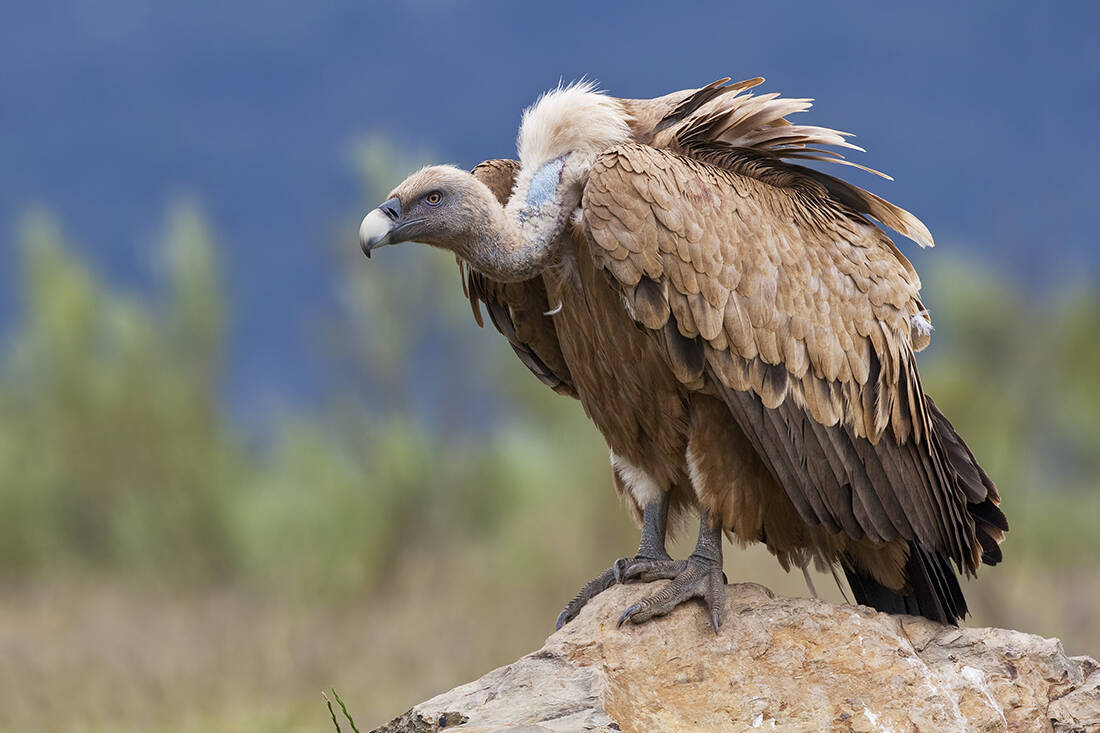
If it has a creepily long neck and a hook-like beak, it is undoubtedly vulture (Gyps fulvus). The evil brother of the eagle remains the second largest bird in Europe, with its typical weight reaching 11 kg.
Despite its weight, the large wings (opening at 4 meters) allow it to fly at impressive speeds of 75 km / h. We usually find it riding the warm currents in the temperate climates of the Mediterranean (its largest population is in Spain).
Although it prefers to feed on corpses in hot climates, the vulture proves to be just as resourceful in colder climates, especially when it comes to its reproductive strategy.
But he is also very good at hunting. As a diurnal predator, it is an extremely cooperative bird, circling with its friends over promising places. When they find something that interests them, they all go down together to feed, while necessarily maintaining the order they had in the air. Something like a macabre dance.
In fact, as long as they feed on the carcass in groups, their joyful cries add another element of terror. Vultures are very communicative animals, preferring the voice to any other type of interaction.
Although they will attack even injured or debilitated animals, such as cows and sheep, they also have a sweet side. Their ability to commit for life.
Exclusively monogamous, the vulture will find its mate and they will live together until death do them part. And again they spin together the one and only egg that the female lays.
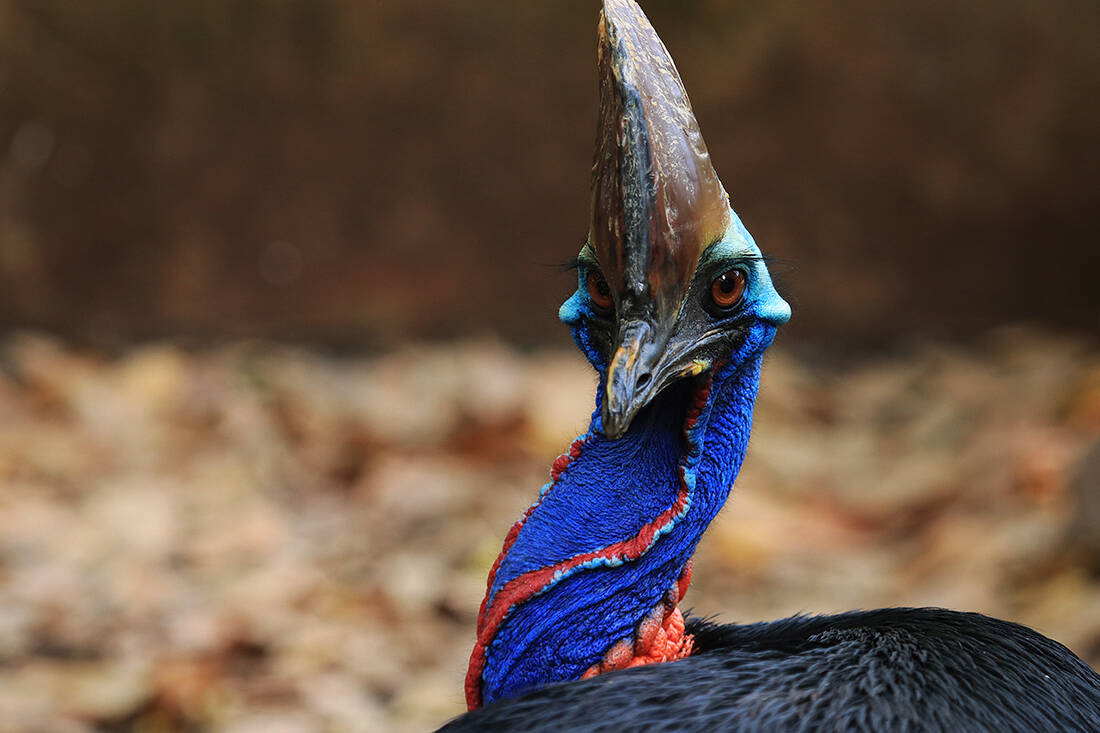
Awkward, aggressive and agile, the casuarius will kill you if you are in the wrong place at the wrong time. And he inflicts deadly blows with the most characteristic part of his body in terms of terror, his huge nails.
Huge in size (reaches 2 meters in height) and weight (females even reach 75 kg), the southern cassowary (Casuarius casuarius), one of the three species of bird, runs at speeds of 50 km / h. All he does not do is fly, as even in the water he proves to be a very capable swimmer.
Science has just begun to study him seriously and found that his skin is made of a hard but elastic material that is compared in composition to foam.
The casuarian will eat snails, fungi and fallen fruit, however, will not hesitate to attack reptiles and mammals when it senses animal protein levels at their lowest.
He stands out for his very sharp nails and this horned helmet of his head, the "helmet", as they typically call it. Science has been impressed by its genetic resemblance to dinosaurs.
Cassowaries are found only in the rainforests of Australia, New Guinea and some islands in Indonesia. Each species is different. The Australian Cassowary is one of the largest birds in the world.
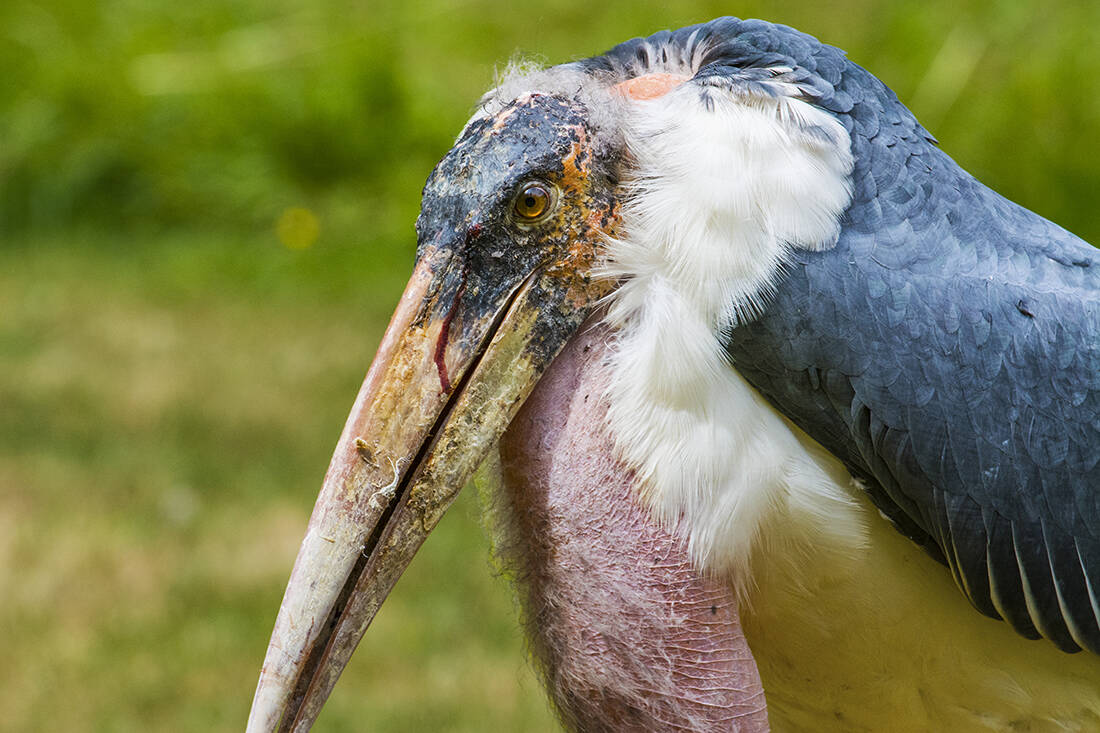
The marabou stork (Leptoptilos crumeniferus) is a very scary bird in appearance, having taken all its characteristics from evolutionary modifications. Nothing happened here, everything is made so that it can fly despite its large size and weight.
The African marabou, which lives in sub-Saharan Africa Africa and is the most typical species, weighs 9 kg and has one of the largest wingspan of the bird kingdom, over 3 meters. As for its height, it reaches 1,5 meters.
This carnivorous carnivore feeds on the remains of large mammals, but will not say no to termites or even other birds, such as flamingo chicks. Even dead elephants have seen him eat.
When he finds none of this, he will turn to human rubbish. But marabou also has a dark side. We know that it is attracted by forest fires. It lurks for animals trying to escape the fire. Panicked animals that easily become his food.
The marabou stands out from this large air sac in the base of the neck, with which it produces sounds, since it is a completely speechless bird. And it produces sounds only in two cases, when it wants to mate or when it is threatened.
Despite its poor appearance, it is a social bird and lives in colonies. The 2-3 eggs are even the yarn and the male.
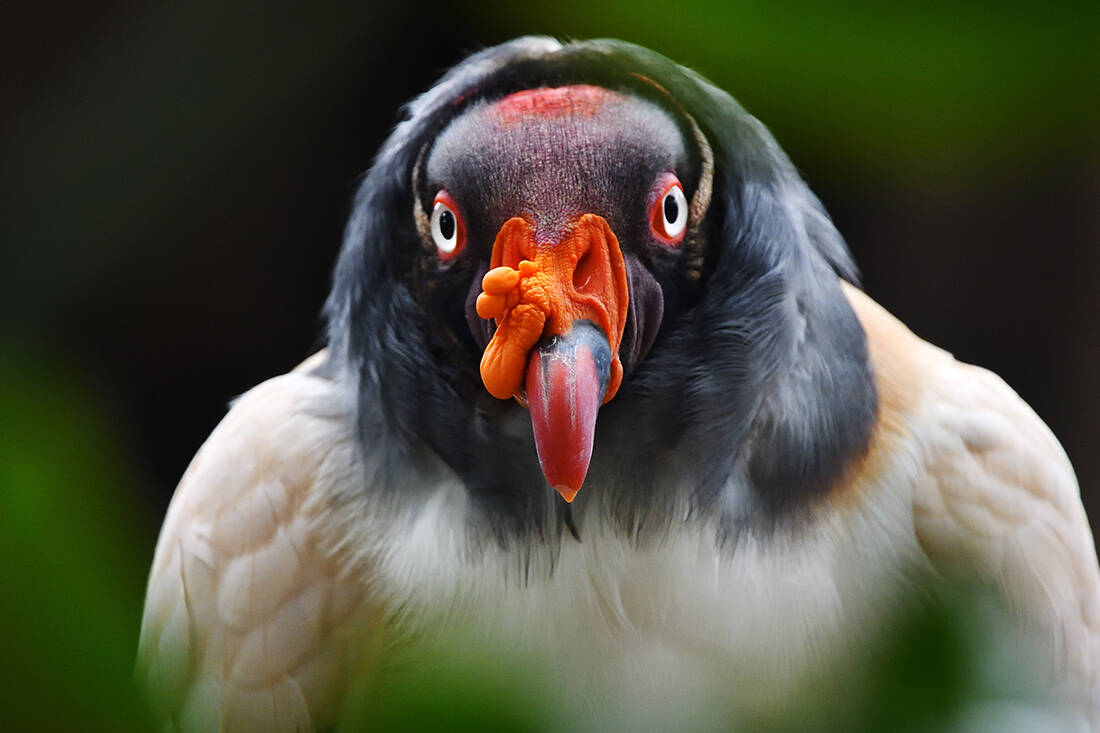
Here we have a bird that was praised by Yeast, a vulture believed to carry messages from the gods to mortals. The royal vulture (Sarcoramphus papa) is one of the 7 species of vulture on the American continent, a mighty monster of the bird kingdom.
If you exclude the head, it looks like a common vulture. But again, why exclude the head, its most characteristic element? Its head (and neck) hosts a feast of colors, as if it were a tropical bird.
The carnivore is the royal vulture, a large bird capable of tearing the flesh of even huge mammals. In fact, no bird will come between the royal vulture and its food. When he arrives at the trunk, he is the king of dinner.
Again they are social animals and even the males lay eggs. The joint care of the young continues during the growth of the chick. The king vulture, which lives from Mexico to Argentina, is one of the few species of vulture that is not endangered.
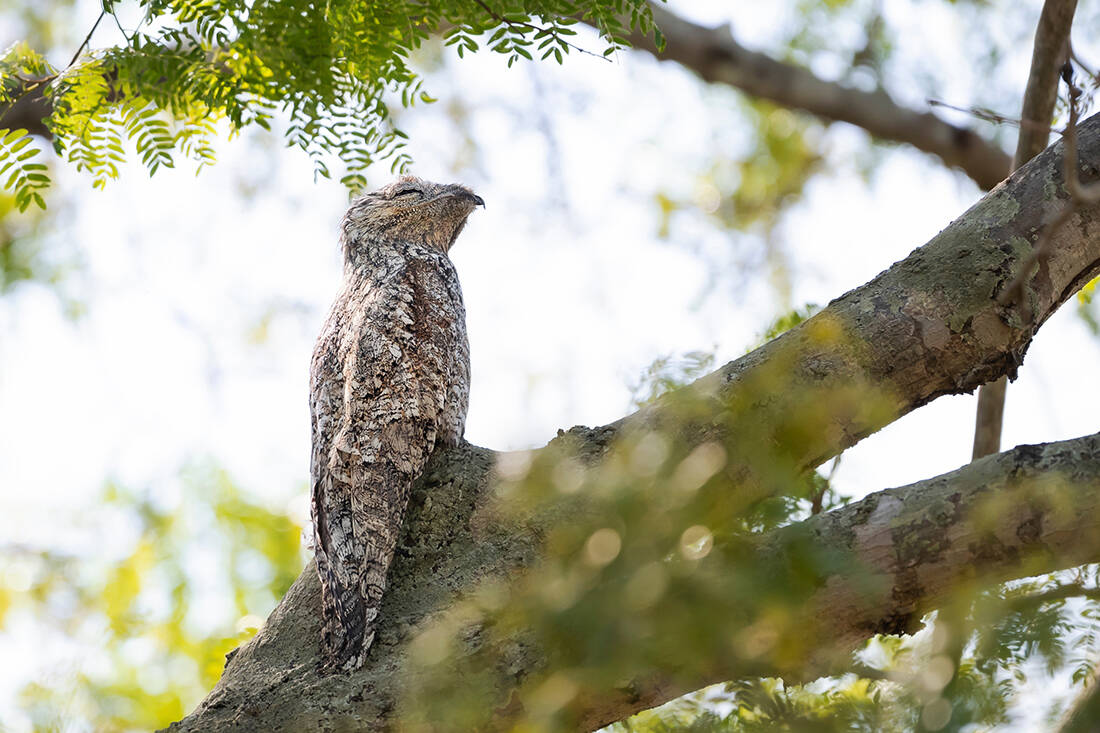
His huge eyes, which occupy most of his head, make him seem to be in constant amazement. The great potoo (Nyctibius grandis) is not funny, however, it has such an incredible night vision that it can feel its predator even when it is asleep.
Despite its comic appearance, this bird has the ability to remain invisible. Its dotted wings function as camouflage, you can hardly distinguish it from the branches of a tree. This is how it hides, in public view, during the day.
Until the Sun sets all this, when he becomes king in his territory. No insect is safe anymore. The "branch" is no longer a branch, but a very capable hunter of the forests of Central and Latin America.
Equally frightening is his voice, this "potoo" that mechanically repeats and is responsible for its name resonates in the rainforest, causing shivers to the uninitiated.
Monogamous and without differences between males and females, it is this complete lack of dimorphism that impresses scientists, as they can not distinguish the two sexes in a nest.
The Great Potoo reaches a length of half a meter and is a deadly danger for whatever it puts in its mouth. It is not a threat to humans, but the prospect of a bird camouflaging itself in the trees during the day and tearing the darkness at night with its eerie cries is not the best.

The medium-sized songbird (Pitohui dichrous) looks awkward and completely innocent. But it is one of the few poisonous bird species.
Its wings contain not just venom, but one of the most powerful neurotoxins man has ever discovered. Its striking colors and pleasant appearance are nothing but an evolutionary trick. A trick that can prove fatal.
It lives exclusively in the forests of New Guinea and was in fact the first venomous bird we ever spotted. Researcher Jack Dumbacher, who was on a mission to the Smithsonian Institution in the country to observe the reproductive behavior of pitohui, discovered it in a difficult way at the end of the decade.
Dumbacher accidentally cut his hand on the bird's claws. The small hack started to hurt him much more than he expected. His hand numb, as did his mouth, when he instinctively licked her wound.
The researcher eventually survived the odyssey and when he asked the locals what he had that made him suffer so much, they simply replied "stay away from the cursed bird!".
Laboratory analysis of its plumage indicated its striking feature. Chemist John Daly even injected mice with bird venom and saw them paralyzed. Higher doses of the toxin were fatal to rodents: paralysis, cardiac arrest and death.
With the exception of their killer side and their powerful claws and beaks, however, the hooded pitohui are exquisite songbirds. And omnivorous.
From an extremely poisonous beetle it even replenishes its neurotoxin and science does not know exactly how it survives from such a meal.

It reigns in the savannas of sub-Saharan Africa as one of the most powerful eagles of the Old World. As the largest and strongest eagle on the Black Continent, the war eagle (Polemaetus bellicosus) can easily knock down an adult male, as the guardians of South Africa's Kruger National Park are well aware.
With a body length of a little less than 1 meter, this diurnal predator makes it clear from the outset that you need to stay away from it. In fact, as Krueger's officials tell us, he has so much strength in his legs that if he grabs you by the hand, the hand will become crushed.
Not that this will ever happen, as he prefers guinea fowl and chickens, but attacks are often recorded even on large birds, such as the European stork.
It also targets mammals, primarily antelopes, but also goats, lambs and even monkeys.
The war eagle is not a good father at all. It does not participate in the hatching of the egg nor will it bring food to the chicks later. The mother does everything.
But again, the little one will fly and chase in the first 100 days of his life.
